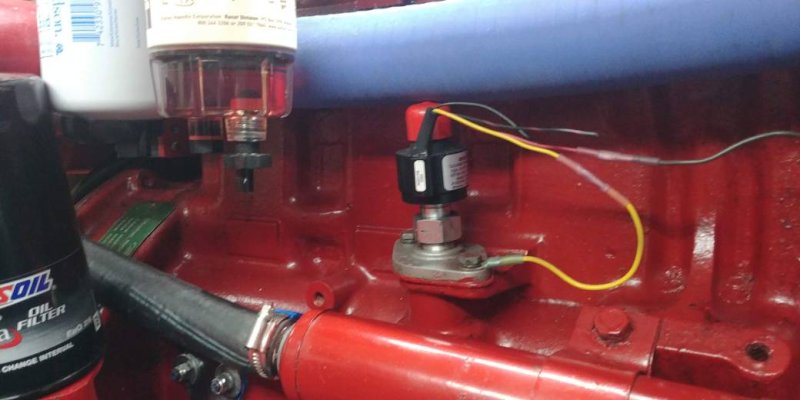socalrider
Guru
- Joined
- Feb 14, 2020
- Messages
- 1,061
- Location
- usa
- Vessel Name
- SEA WOLF
- Vessel Make
- 1979 CHB 41 Trawler
I've done a bunch of reading on this & am about to try something, thought I'd pass it through the forum gauntlet first:
I've got twin Lehman 120's, one has a 120A Balmar, and the other has an internally regulated Motorola. Single 12V 700Ah FLA bank. Stock motorola tachometers.
My tachs are very inaccurate. I'm actually planning on replacing all my analog gauges with an N2K system, but that's another thread. In addition to being inaccurate, my tach signal on the Balmar unit drops out completely when my bank is fully charged - I suspect because the motorola float voltage set point is a bit above the Balmar set point.
Regardless, I'd like a more reliable source for my tach signal than the alternators. My FL120's don't have the mechanical drives installed, but Aetna Engineering makes drives and senders that will fit. Slick, $535 shipped seems excessive.
Has anyone tried just using a simple hall effect sensor like these for around $20? There's a good spot under the pulley to mount a bracket with 1/4-20 holes already tapped. Sensor would be wired to the N2K gateway, calibrated to 1 pulse per RPM. Seems like a good way to save $500. Am I missing anything?
I've got twin Lehman 120's, one has a 120A Balmar, and the other has an internally regulated Motorola. Single 12V 700Ah FLA bank. Stock motorola tachometers.
My tachs are very inaccurate. I'm actually planning on replacing all my analog gauges with an N2K system, but that's another thread. In addition to being inaccurate, my tach signal on the Balmar unit drops out completely when my bank is fully charged - I suspect because the motorola float voltage set point is a bit above the Balmar set point.
Regardless, I'd like a more reliable source for my tach signal than the alternators. My FL120's don't have the mechanical drives installed, but Aetna Engineering makes drives and senders that will fit. Slick, $535 shipped seems excessive.
Has anyone tried just using a simple hall effect sensor like these for around $20? There's a good spot under the pulley to mount a bracket with 1/4-20 holes already tapped. Sensor would be wired to the N2K gateway, calibrated to 1 pulse per RPM. Seems like a good way to save $500. Am I missing anything?

